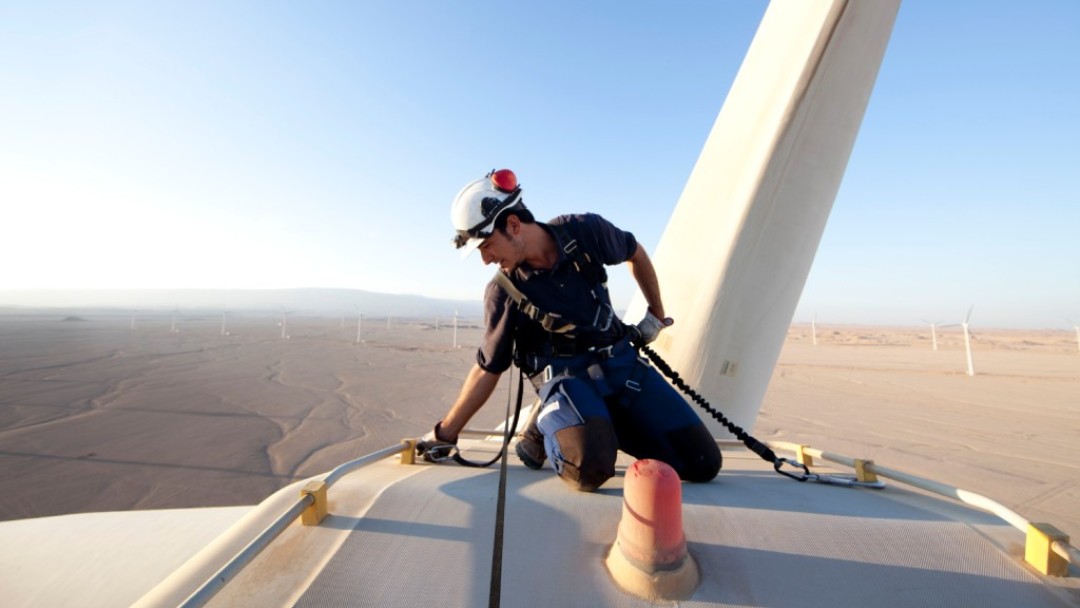News from 2016-01-25 / KfW Development Bank
Wind at the Red Sea generates clean energy
Egypt: Inauguration of one of Africa's biggest wind farms
The wind on the Red Sea coast blows strongly and steadily, often reaching speeds of up to eleven metres per second, equivalent to wind force 6. And the landscape of the Gulf of El Zayt is barren and flat, making it an ideal location for the use of wind power. So it's not surprising that one of Africa's largest wind farms has now been inaugurated there. KfW Development Bank has been supporting its construction on behalf of the Federal Ministry for Economic Cooperation and Development (BMZ). The 200-megawatt facility will supply as much as 800 gigawatt hours of electricity each year, thus meeting the needs of over half a million people.
Expanding the renewables share to 20 percent
At the opening ceremony, Egypt's Minister of Electricity and Renewable Energy, Dr Mohamed Shaker, emphasised the fact that Egypt intends to boost the share of its power production accounted for by renewable energies to 20% by the year 2022. The wind farm will play an important part in this. There is every chance that this goal will be achieved. The country is also seeking greater private sector involvement and hopes the wind farm will provide significant impetus for this. The facility will contribute to climate protection as the sustainable generation of power will cut greenhouse gas emissions by 400,000 tonnes annually.
Egypt has been committed to the development of renewable energy sources since as long ago as 1986. In Zafarana, about 120 kilometres to the south of Suez, a major wind farm has already been in operation since 1999. Its construction was also supported by German Financial Cooperation. Another 100 turbines are now turning on the Gulf of El Zayt. They may also pose a risk to migratory birds that pass over the Red Sea coastal region on their way further south.
A radar system protects migrating birds
For this reason, the wind farm also includes a pilot project intended to protect birds. A radar-controlled system that enables the ornithologists to identify the species and number of migratory birds from a far distance is used. Individual turbines are deactivated before the birds come too close to the rotors. No significant output losses are to be feared from this: the impact on power production is estimated at less than 2%.
The total costs of the wind farm amount to EUR 340 million. KfW Development Bank is putting EUR 191 million into the project on behalf of the BMZ. The other financing bodies involved are the European Commission, with a grant totalling EUR 30 million, and the European Investment Bank (EIB), with a EUR 50 million loan. Egypt's counterpart contribution is EUR 68.5 million.
Another positive factor is that the construction costs for the wind farm on the Gulf of El Zayt turned out to be lower than planned. The money saved is being used to expand its capacity by 40 megawatts. Furthermore, another wind farm is to be built nearby with support from German Financial Cooperation – a further contribution to expanding renewable energies in Egypt.


Share page
To share the content of this page with your network, click on one of the icons below.
Note on data protection: When you share content, your personal data is transferred to the selected network.
Data protection
Alternatively, you can also copy the short link: https://www.kfw-entwicklungsbank.de/s/enzBWrMC.BSUA
Copy link Link copied